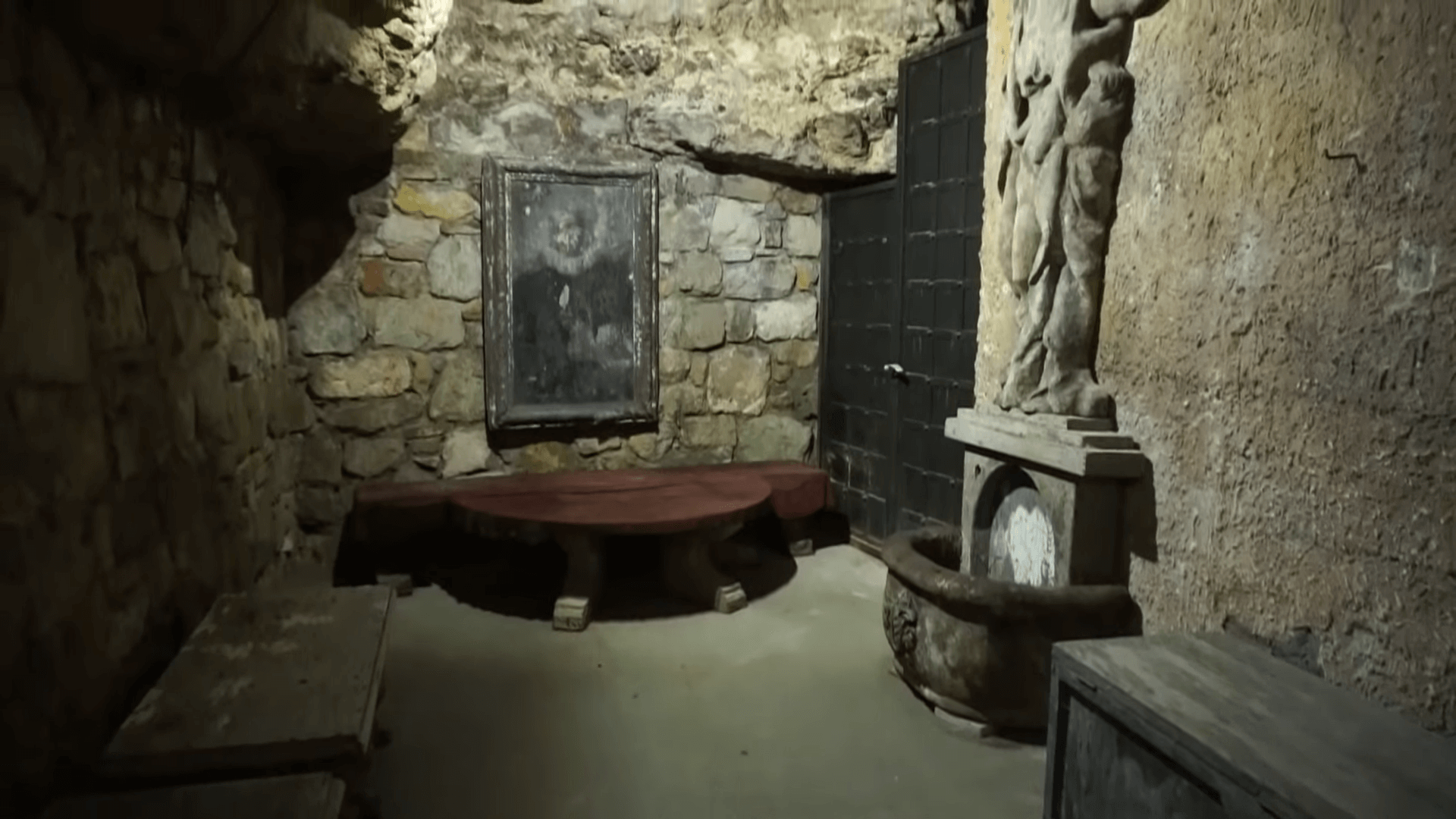The Enigmatic Labyrinth Under Buda Castle: A Journey into Budapest’s Dark History

Unveiling the Ancient Caves
The origins of the Buda Castle Labyrinth can be traced back to a time long before the rise of civilizations. These underground caves were formed by rushing thermal waters, carving their way through solid rock over half a million years ago. Archaeological evidence suggests that these caves were used as shelters and hunting grounds by prehistoric humans, with ancient stone tools dating back 350,000 years discovered within their depths.
Stretching over 1,200 meters and located nearly 16 meters beneath the ancient castle district, these caves have witnessed the unfolding of history. The unique significance of these caves led to their recognition as a UNESCO World Heritage Site in 1987, acknowledging their role in shaping the urban landscape of Budapest.
A Journey Through Time
The labyrinth’s history intertwines with the rise and fall of various civilizations that have left their mark on the region. During the Roman era, the site of the labyrinth was part of the ancient city of Aquincum, situated between Buda and Pest. The city thrived as an economic center until it was ravaged by the Mongol invasion in 1241.
Following the devastation, the formidable Buda Castle was erected above the ancient chambers by King Bela IV. This marked the beginning of a new chapter for the labyrinth, as it became an integral part of the castle’s structure and served various purposes throughout the centuries.
Dark Legends and Mysterious Tales
The labyrinth’s dark history is shrouded in legends and tales that captivate the imagination. One haunting legend tells of a Turkish Harem near the labyrinth’s entrance, where female skeletons were discovered, believed to have been bricked up by the Pasha of Buda. These chilling tales hint at the labyrinth’s use as a prison and torture chamber during the Middle Ages.
However, perhaps the most famous resident of the labyrinth was Vlad Tepes, also known as Dracula. Imprisoned within the subterranean chambers, Dracula’s time in the labyrinth is surrounded by mystery. Some accounts suggest he spent over a decade there, while others claim a shorter duration. The exact nature of his imprisonment and whether he was subjected to torture remain hidden within the labyrinth’s walls.
Closure and the Unexplained
In 2011, the Buda Castle Labyrinth was abruptly closed by the police, leaving both locals and tourists puzzled. The reasons behind this sudden closure remain undisclosed, adding a layer of intrigue to an already enigmatic attraction. Speculations abound, ranging from preservation concerns to hidden secrets within the labyrinth’s depths. Whatever the true motive, the closure only served to heighten the labyrinth’s allure and left visitors yearning for answers.
Rediscovering the Labyrinth’s Secrets
After years of closure, the Buda Castle Labyrinth reopened its doors to the public, allowing visitors to once again explore its mysterious passages and chambers. Today, it stands as a testament to the rich history and cultural heritage of Budapest. With its prehistoric artifacts, Roman remnants, and echoes of medieval tales, the labyrinth offers a multi-layered experience for those who dare to venture into its depths.
Visitors can wander through the winding paths, guided only by the dim light of lanterns, immersing themselves in the labyrinth’s enigmatic ambiance. The damp walls, eerie silence, and occasional glimpses of historical relics create an atmosphere that transports visitors back in time, making the labyrinth a truly unique and unforgettable destination.
Preserving the Past, Embracing the Future
As a UNESCO World Heritage Site, the Buda Castle Labyrinth holds immense cultural and historical value. It serves as a reminder of the ancient civilizations that once thrived in the region and the enduring legacy they left behind. Efforts are underway to ensure the preservation of the labyrinth’s unique features and to continue unraveling its mysteries.
Today, the labyrinth stands not only as a historical landmark but also as a testament to Budapest’s commitment to embracing its past while looking toward the future. It remains a captivating destination that invites visitors to embark on a journey through time, exploring the secrets hidden beneath the streets of this vibrant city.
FAQs
What is the Labyrinth under Buda Castle?
The Labyrinth under Buda Castle is a vast network of caves and tunnels stretching beneath the Buda Castle in Budapest, Hungary. It has served various purposes throughout history and is now a popular tourist attraction featuring exhibits and tours.
How old is the Labyrinth under Buda Castle?
The natural cave system under Buda Castle is millions of years old. However, it has been used and expanded by humans for over a thousand years, serving as a shelter, prison, and wine cellar, among other uses.
How can I visit the Labyrinth under Buda Castle?
Visitors can explore the Labyrinth via guided or self-guided tours. It's recommended to check the official website or contact them directly for the most up-to-date information on tours and tickets.
What can I see in the Labyrinth under Buda Castle?
The Labyrinth features several themed sections showcasing its historical and cultural significance. There are exhibits about its past uses, reproductions of cave paintings, and statues. Some of its most famous attractions include the "Labyrinth of Darkness" and the cell where Vlad Tepes (known as Dracula) was allegedly imprisoned.
Is it safe to visit the Labyrinth under Buda Castle?
Yes, it is generally safe to visit the Labyrinth. The pathways are well-maintained, and lighting is installed. However, as with any such attraction, visitors should take care when moving through the tunnels and follow any safety instructions.
What is the temperature in the Labyrinth?
The temperature inside the Labyrinth remains relatively constant year-round, typically around 14-16°C (57-61°F). It's a good idea to bring a light jacket or sweater, even in the summer.
How long does a visit to the Labyrinth typically take?
A typical visit to the Labyrinth can last anywhere from 1 to 2 hours, depending on whether you're part of a guided tour or exploring at your own pace.
